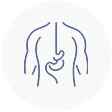Aesthetic Surgery
We understand the importance of looking and feeling your best self. Whether it’s related to fluctuating weight, inherited features, trauma or ageing, insecurities are extremely personal and sensitive aspects of our lives. Fortunately, there is a range of aesthetic procedures available and our experienced surgeons are here to help you.
What is a breast reduction surgery? Dr Assad Bangash explains further below.
You know what it’s like to live with uncomfortably large breasts – the shoulder and neck pain, the difficulty in exercising, finding the right clothes and last but not the least, the unwanted stares. Having breasts that are just too large for your frame affects your life in so many ways. When you’re ready to make a change for the better, you have an exciting new option.
Read More >>
In the below video, Dr Assad Bangash answers the questions surrounding the process for a breast reduction patient.
Age, significant weight fluctuation, and having children considerably affects skin and soft tissue laxity leading breasts to sag out of proportion with the rest of the body.
Read More >>
What is body contouring and when is Abdominoplasty considered a suitable treatment? Dr Assad Bangash explains more in the above video.
You’ve worked hard to lose weight and to improve your muscle tone through diet, exercise programs and surgery. But when you have reached your desired weight but not your desired shape, it may be time to consider a tummy tuck.
Read More >>
What is a patient journey for body contouring? Dr Assad Bangash takes us through the process for this procedure in the above video.
When people lose significant amounts of body weight they are often, still troubled by excess skin. This can make it harder to fit into clothes and even cause mobility problems. Also, recurring infections often occur in the skin folds. Body contouring or reshaping surgery may significantly improve your comfort and quality of life. It can be performed on the abdomen, flanks and buttocks, breasts and back, inner thighs and arms. There are a many different types of body contouring procedures available, and operations need to be tailored to suit individual needs and expectations.
Read More >>
For the millions of us who diet and work out regularly, but still don’t see the results we want, there is hope with a plastic surgery procedure called liposculpture.
Read More >>
AFTER SURGERY
There will be a mild to moderate amount of pain and discomfort associated with the surgery. This should be easily controlled with oral medications. Panadol with Ibuprofen is generally always sufficient for pain control.
The discomfort and pain should begin to decrease within 48 hours after surgery. A significant increase in pain after this period should prompt you to call the office.
You may notice some numbness in the area from which the fat was removed. This is because the surgery often causes a temporary disruption of the small nerve fibres going through the fat layer to reach the skin surface. You should not be alarmed, as the sensation will gradually return over several weeks. Some patients will normally experience prolonged numbness that may last for months. As the nerves start to heal, it is normal to experience some tingling in the area.
Bruising and swelling are to be expected after this surgery. These symptoms will peak 36 to 48 hours after surgery and will gradually subside over 10 to 14 days. To minimise the swelling you should elevate your limb with a pillow underneath.
It is not unusual during the healing phase, to note some irregularities under the skin. These small bumps under the skin are present because your body is sending inflammatory cells to the area to get rid of residual damaged fat cells. For every fat cell that we remove during liposuction, we injure a few more. This is a beneficial effect because your body will gradually resorb these injured cells over several weeks. Thus, although you will begin to notice significant changes soon after the surgery, your neck should continue to slowly improve for up to 6 months after your procedure.
The skin of the neck will often feel quite stiff while it is healing. Do not be alarmed. It will gradually soften up and return to normal over a period of several weeks, or, sometimes, months.
Patients with diabetes, smoking or other comorbidities may not be good candidates for this procedure as the risks of poor healing and infection leading to permanent scarring and poor aesthetic results may be much higher
CALL THE OFFICE PROMPTLY IF YOU NOTICE ANY OF THE FOLLOWING:
- you experience increased difficulties swallowing or breathing.
- development of a temperature elevation exceeding 38 degrees.
- a significant increase in pain after the first 48 hours following surgery
For whatever reason, if you notice one of the above changes and cannot reach us at our office or through the answering service, present yourself to the emergency department for evaluation.
CALL TODAY
HOW DO I CARE FOR MYSELF AFTER SURGERY?
Make arrangements to have someone drive you to, and from, your surgery.
Having someone stay with you on at least the first night after your surgery is highly recommended.
Be sure to fill your prescriptions before your surgery since it means one less thing for you to worry about afterwards.
Arrive for your surgery in loose, comfortable clothing. Your top should button or zip rather than pull over your head.
Be sure to keep the small incisions, used for liposuction, clean and dry until your first post operative visit to the office. You may start to shower beginning 2 days after your surgery.
Take the antibiotics and pain medication only as prescribed by the office.
Do not take any aspirin or any anti-inflammatory compounds for 2 weeks before and 2 weeks after your surgery unless you first discuss it with your surgeon.
After the surgery, you will be placed in a supportive elastic garment that is to be worn continuously, unless showering, for the first 7 to 10 days. After this time, it should only be worn at night for the next 3 to 4 weeks.
The sutures used to close the small incisions, may be either dissolvable or non-dissolvable. Dissolvable sutures will disappear on their own in 5 to 7 days. Non dissolvable sutures should be removed approximately 1 week after surgery.
You should do no vigorous exercise and should avoid any significant physical exertion for a minimum of 3 weeks after your surgery.
You should not participate in any contact sports until approved by your surgeon. Generally, you should avoid such activity for a minimum of 4 weeks after your surgery.
RECOVERY TIMETABLE
The approximate recovery after liposuction is as follows:
DAY 1 Return home, some bruising and mild swelling. Wear supportive elastic garment at all times for the first 7 to 10 days, unless showering.
DAY 1-2 Aching, throbbing
DAYS 2 May shower or bathe. Keep incisions dry.
DAY 7 May start to wear cover make up.
WEEKS 3-4 Wear elastic garment at night only. Swelling much improved. Some areas of the neck will feel quite stiff.
6 MONTHS Enjoy your final result.
Ear “set-back” surgery, also known as otoplasty, is a procedure that changes the angle and shape of protruding or uneven ears in children and adults.
• Correction of Prominent Ear
• Ear Lobe Reduction
Read More >>
One of the most common procedures performed for people who are unhappy with wrinkled, sagging skin on the forehead is a brow lift. It is a highly recommended procedure for people with issues of visual field impairment due to sagging forehead muscles and “bunching up” of upper eyelid skin.
Read More >>
BLEPHAROPLASTY (EYELID SURGERY)
What to Expect
Eye Lift, also called Blepharoplasty or eyelid surgery, is one of the most performed facial cosmetic procedures in Australia. It involves removing excess skin and fat from the upper and lower eyelids to solve the problem of drooping eyelids or bulging fat around the eyes. With blepharoplasty, patients have been able to refresh the appearance of their eyes without looking fake.
Recovery
Recovery after an eye lift procedure is relatively pain-free and quick for most patients.
If you are a smoker, you should not smoke for at least 2 weeks prior to surgery and 2 weeks after surgery. Smoking and chewing tobacco inhibit your circulation and can significantly compromise your surgical outcome.
To minimise swelling you may use cool clean compresses or ice wrapped in a dry cloth. Apply these gently to your closed eyes four-to-six times a day for the first twenty-four hours after surgery.
Sleep with the head elevated for the first week after surgery.
Some crusting may appear around your eyes after the first 24 hours. Warm clean compresses applied to the area several times a day will help alleviate the crusting.
If your eyes are dry after surgery, you may use artificial tear drops (available in chemist stores) to help soothe them during the day. Dr Bangash may prescribe a lubricating ointment to put into your eyes at bedtime. It is not unusual for this ointment to briefly blur your vision when it is first applied but this is temporary.
External sutures should be kept clean and dry. If non-dissolvable sutures are used, they should be removed within 5-to-7 days after surgery.
You should do no vigorous exercise and should avoid any significant physical exertion lifting or straining for a minimum of 3 weeks after your surgery, as this activity could disrupt your wound healing. Plan on taking it easy.
You may shower or bathe the day after surgery but do not let the spray directly strike the area of your eyes. Do not rub, wash, or massage your eyelids.
Do not wear any eye makeup until after you are examined and told it is all right to do so. Do not wear contact lenses for the first 5 days after surgery. Contact lenses may be worn after this time if there is no significant eye irritation present, and if the incisions are healing well.
RECOVERY TIMETABLE
Approximate recovery after Blepharoplasty is as follows:
DAY 1 Return Home. Use cool compresses for 24 Hours. Mild swelling and bruising, mild discomfort.
DAY 2-3 Maximum bruising, swelling and some crusting on eyelashes. Use warm compresses for crusting.
DAY 5-7 Stitches removed or dissolving. Bruising going away.
WEEK 1-4 Eyes mildly irritated or teary.
A facelift, also known as rhytidectomy or rhytidoplasty, is a surgical procedure that tightens and removes sagging skin on the face and neck. Facial muscles may be surgically tightened to improve their tone. Excess fat may also be removed or repositioned and muscles tightened as part of the neck surgery.
Read More >>
This surgery is planned to change the form and function of the nose. Nasal deformities can develop due to trauma or can be present from birth. This can have subtle effects on breathing and self-image. This procedure is designed to change the appearance of the nose, improve breathing or both.
Read More >>
In the above video, Dr Assad Bangash discusses what Gynaecomastia or ‘Male Breast Reduction’ is and the patient journey of this treatment.
Overdeveloped or enlarged breasts in men is common in men of any age. It can be the result of hormonal changes, heredity conditions, disease, or the use of certain drugs. Gynaecomastia can cause emotional discomfort and impair self-confidence in some men. Some men even avoid certain physical activities and physical intimacy out of embarrassment and to hide their condition.
Male Breast Reduction Surgery is the surgical correction of overdeveloped or enlarged breasts in men, a condition called Gynaecomastia.
The two types of male breast reduction are surgical mastectomy and liposuction-assisted mastectomy. If an overgrowth of the breast gland is found, a partial gland removal must be done. At Cutting Edge Surgery Toowoomba, we make a small incision around the bottom half of the areola, do a partial removal of the breast gland or breast bud and with POWER ASSISTED LIPOSUCTION remove enough fat and glandular tissue to create a normal male breast or chest appearance.
THE BEST CANDIDATE FOR GYNAECOMASTIA CORRECTION MUST BE:
Healthy and without a life-threatening illness or medical conditions that can impair healing Non-smokers and non-drug users with a positive outlook and committed to improving the physical symptoms of gynaecomastia.

Aesthetic Surgery
Breast Reduction and Lift, Otoplasty, Abdominoplasty, Rhinoplasty, Liposuction, Gynecomastia and more

Reconstructive Surgery
Trauma Injuries and Chronic Wounds, Skin Cancer Removal or Repair, Management of Chronic Wounds

Breast Surgery
Oncoplastic Breast Surgery, Lumpectomy, Mastectomy, Breast Benign Disease, Sentinel Node Biopsy

Hand Surgery
Our surgeons are experienced in treating Hand Disease and Hand Trauma reconstructive procedures

General Surgery
Hernias, Gall Bladder Surgery, Colonoscopy, Gastroscopy, Thyroid Surgery, and Bowel Surgery
Not Sure What You Need?
Simply give us a call and book an appointment for yourself. Click below and contact our practice to arrange a consultation time to go through your treatment options. We are here to help.